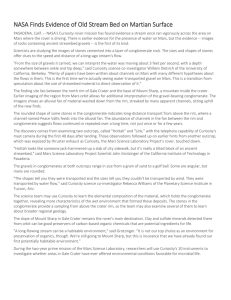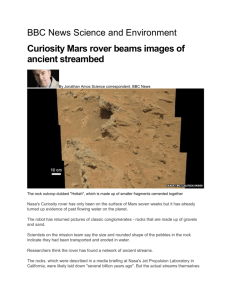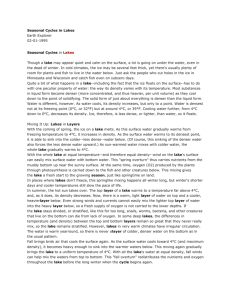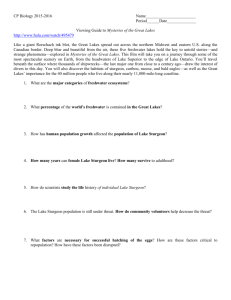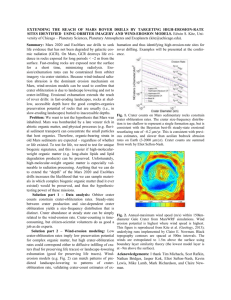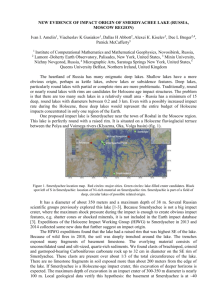SLT - WordPress.com
advertisement
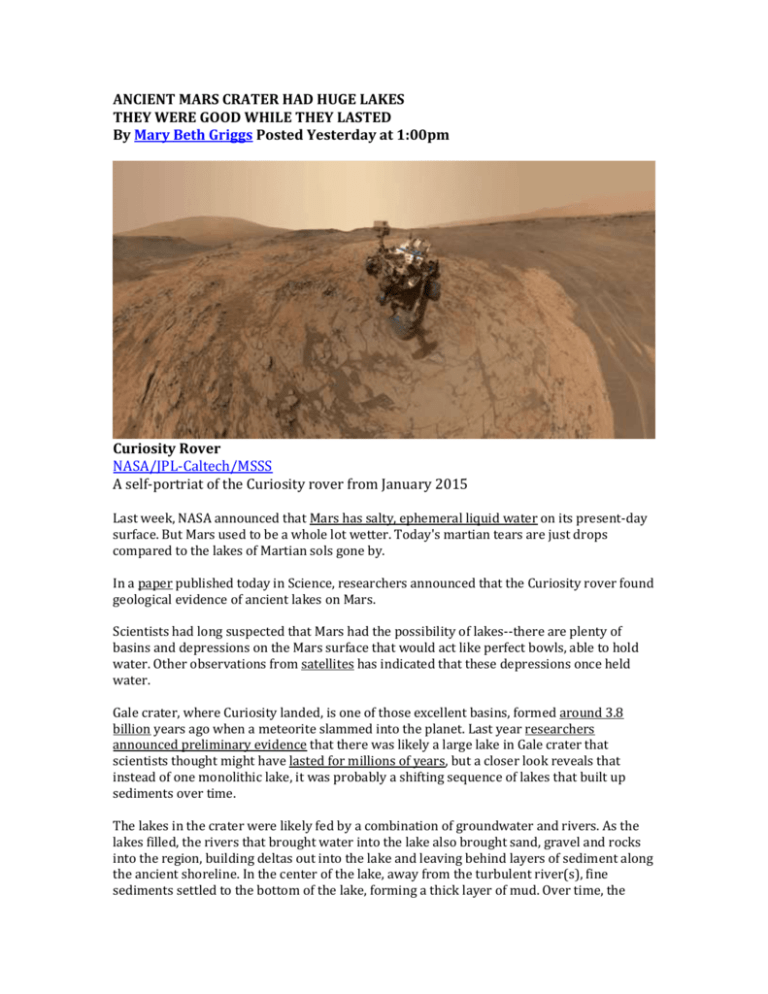
ANCIENT MARS CRATER HAD HUGE LAKES THEY WERE GOOD WHILE THEY LASTED By Mary Beth Griggs Posted Yesterday at 1:00pm Curiosity Rover NASA/JPL-Caltech/MSSS A self-portriat of the Curiosity rover from January 2015 Last week, NASA announced that Mars has salty, ephemeral liquid water on its present-day surface. But Mars used to be a whole lot wetter. Today's martian tears are just drops compared to the lakes of Martian sols gone by. In a paper published today in Science, researchers announced that the Curiosity rover found geological evidence of ancient lakes on Mars. Scientists had long suspected that Mars had the possibility of lakes--there are plenty of basins and depressions on the Mars surface that would act like perfect bowls, able to hold water. Other observations from satellites has indicated that these depressions once held water. Gale crater, where Curiosity landed, is one of those excellent basins, formed around 3.8 billion years ago when a meteorite slammed into the planet. Last year researchers announced preliminary evidence that there was likely a large lake in Gale crater that scientists thought might have lasted for millions of years, but a closer look reveals that instead of one monolithic lake, it was probably a shifting sequence of lakes that built up sediments over time. The lakes in the crater were likely fed by a combination of groundwater and rivers. As the lakes filled, the rivers that brought water into the lake also brought sand, gravel and rocks into the region, building deltas out into the lake and leaving behind layers of sediment along the ancient shoreline. In the center of the lake, away from the turbulent river(s), fine sediments settled to the bottom of the lake, forming a thick layer of mud. Over time, the position of the rivers shifted, just like they do on Earth today. As the rivers shifted, they deposited sand and gravel in different places around the lake. These deposits of sandstone (from the river system) and mudstone (from a lake environment) are what the Curiosity Rover has found, giving scientists on Earth clues that there were once lakes on Mars. The lake remains described in the new paper were temporary, only lasting on average between 100 and 10,000 years (a long time by human standards, but the blink of a geological eye). This happened over and over again, with lakes filling and drying up over the course of 10,000 to 10 million years within Gale crater.


